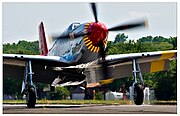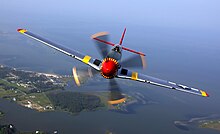The Tuskegee Airmen was a group of primarily African American military pilots and airmen who fought in World War II. They formed the 332nd Fighter Group and the 477th Bombardment Group (Medium) of the United States Army Air Forces (USAAF). The name also applies to the navigators, bombardiers, mechanics, instructors, crew chiefs, nurses, cooks, and other support personnel. The Tuskegee airmen received praise for their excellent combat record earned while protecting American bombers from enemy fighters. The group was awarded three Distinguished Unit Citations.
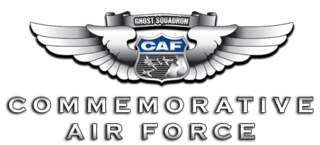
The Commemorative Air Force (CAF), formerly known as the Confederate Air Force, is an American non-profit organization based in Dallas, Texas, that preserves and shows historical aircraft at airshows, primarily in the U.S. and Canada.

Charles Walter Dryden was a U.S. Army Air Force officer and one of the original combat fighter pilots with the 332nd Fighter Group's 99th Fighter Squadron, a component of the Tuskegee Airmen. Among the United States' first eight African American combat fighter pilots, Dryden is notable as a member of the Tuskegee Advance Flying School (TAFS)'s Class Number SE-42-C, the program's 2nd-ever aviation cadet program.

Lee Andrew Archer, Jr. was an African American fighter Ace in the 332nd Fighter Group, commonly known as the Tuskegee Airmen, during World War II. He was one of the first African American military aviators in the United States Army Air Corps, the United States Army Air Forces and later the United States Air Force, eventually earning the rank of lieutenant colonel.

Milton Pitts Crenchaw was an American aviator who served with the Tuskegee Airmen during World War II and was the first Arkansan to be trained by the federal government as a civilian licensed pilot. He served during World War II as a civilian flight instructor. He was one of the two original supervising squadron members. In 1998 he was inducted into the Arkansas Aviation Hall of Fame. The grandson of a slave, he was known as the "father of black aviation in Arkansas" who broke through color barriers in the military.

Red Tails is a 2012 American war film directed by Anthony Hemingway in his feature directorial debut, and starring Terrence Howard and Cuba Gooding Jr. The film is about the Tuskegee Airmen, a group of African-American United States Army Air Forces (USAAF) servicemen during World War II. The characters in the film are fictional, although based on real individuals. The film was produced by Lucasfilm Ltd. and released by 20th Century Fox, and would be the last film Lucasfilm released before being purchased by The Walt Disney Company nine months later. This was Cuba Gooding Jr.'s first theatrically released film in five years since his starring role in 2007's Daddy Day Camp.
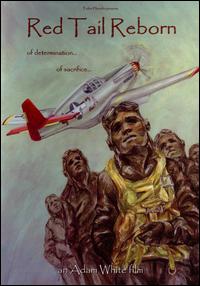
Red Tail Reborn is a 2007 historical documentary film by Adam White about the Commemorative Air Force's Red Tail Project. The project involves the restoration, exhibition and maintenance of a World War II P-51 Mustang flown by the United States Air Force 332d Fighter Group. The exhibition of this plane is considered to be a traveling and flying tribute to the Tuskegee Airmen. In addition to increasing awareness of the travails of the Tuskegee Airmen, this film served to highlight the Red Tail Project fundraising effort to rebuild the plane after a 2004 crash.

Flight of the Red Tail is a 2009 historical documentary film by Adam White about the Red Tail Project's successful return to flight of a World War II P-51 Mustang. The plane had been originally flown by the United States Air Force 332d Fighter Group as a bomber escort for the Allied Forces in the European Theatre of World War II and serves as a travelling and flying tribute to the Tuskegee Airmen. It had become inoperable during a 2004 crash after having been restored for exhibition flying once before in 2001. The Red Tail Project is a part of the Commemorative Air Force. The film is a sequel to Red Tail Reborn which brought attention to the attempt to relaunch of the plane after the 2004 crash.

George Hardy is an American retired pilot and military officer. In World War II Hardy served with the Tuskegee Airmen and flew 21 combat missions. In the Korean War he flew 45 combat mission as the pilot of a bomber. In the Vietnam War Hardy flew 70 combat missions piloting an AC-119K gunship.

2nd Lt. Alfred M. Gorham (1920–2009) (POW) was a Tuskegee Airman from Waukesha, Wisconsin. He was the only Tuskegee Airman from Wisconsin, and he was a prisoner of war after his plane went down over Munich, Germany in World War II.

James Henry Harvey III is a retired United States Army Air Corps/United States Air Force (USAF) officer and former African American fighter pilot who served with 332nd Fighter Group's 99th Fighter Squadron, best known as the Tuskegee Airmen, "Red Tails", or among enemy German pilots, Schwartze Vogelmenschen. He is one of the 1,007 documented Tuskegee Airmen pilots.

LTC Alva Newte Temple was an officer in the U.S. Army Air Forces and combat fighter pilot with the 332nd Fighter Group's 99th Fighter Squadron and 300th Squadron, best known as the all-African American Tuskegee Airmen, "Red Tails," or among enemy German pilots, “Schwartze Vogelmenschen”. He was one of the 1007 documented Tuskegee Airmen Pilots.

Harold H. Brown was a U.S. Army Air Force officer who served during World War II as a combat fighter pilot with the 332nd Fighter Group, best known as the Tuskegee Airmen. Brown's P-51C aircraft was shot down in the European Theatre of World War II and he became a prisoner of war.

Lincoln T. Hudson was a U.S. Army Air Force officer, World War II fighter pilot, Prisoner of War in Nazi Germany, and a corporate executive. During World War II, Hudson served in the all-African-American 332nd Fighter Group's 301st Fighter Squadron, best known as the all-African American combat fighter pilot group, the Tuskegee Airmen, "Red Tails," or among enemy German pilots, “Schwartze Vogelmenschen”.
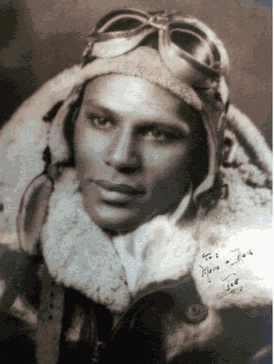
George Jewell Iles was a U.S. Army Air Force officer, former World War II Prisoner of War in Nazi Germany, and combat fighter pilot with the 332nd Fighter Group's 99th Fighter Squadron, best known as the all-African American Tuskegee Airmen.
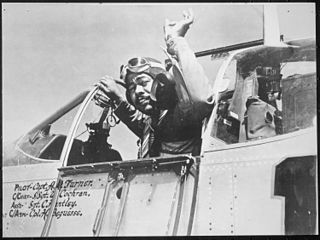
Andrew D. Turner was an officer in the U.S. Army Air Forces (USAAF) and a fighter pilot and commanding officer of the all-African American 332nd Fighter Group's 100th Fighter Squadron, best known as the all-African American Tuskegee Airmen, "Red Tails," or among enemy German pilots, “Schwartze Vogelmenschen”.
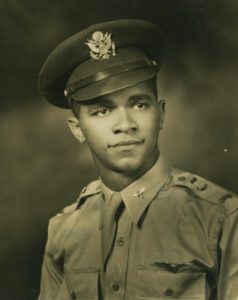
Charles DeBow was an officer in the U.S. Army Air Force and combat fighter pilot and commanding officer of the 332nd Fighter Group's 301st Fighter Squadron, best known as the prodigious, all-African American Tuskegee Airmen. He was one of the 1,007 documented Tuskegee Airmen Pilots.
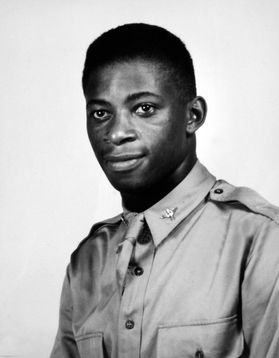
Willie Howell Fuller was a U.S. Army Air Force/U.S. Air Force officer, combat fighter pilot, and combat flight instructor with the 332nd Fighter Group's 99th Pursuit Squadron, best known as the Tuskegee Airmen or "Red Tails". He was the first black flight instructor for the single engine planes at Tuskegee. He was the only black flight instructor until December 1944. He was one of 1,007 documented Tuskegee Airmen Pilots. He flew 76 combat missions.

Edward Creston Gleed was an U.S. Army Air Force officer with the famed Buffalo Soldiers/9th Cavalry Regiment, 332nd Fighter Group’s operations officer, and combat fighter pilot with the 99th Fighter Squadron, best known as the Tuskegee Airmen. He was one of the more prominent members of Tuskegee Airmen's ninth-ever aviation cadet program, as well as one of 1,007 documented Tuskegee Airmen Pilots. His classmates included Robert B. Tresville, West Point's seventh African American graduate and the 100th Fighter Squadron's Commanding Officer.

James Alonzo Walker was an American aviator from Manning, South Carolina who served as a Tuskegee Airman during World War II. He flew more than 102 missions in the European Theatre of WWII, and was shot down in action over Serbia at the time occupied Kingdom of Yugoslavia by Third Reich ( Germany). He was saved in Halyard Mission known in Serbian as in July 1944t, by Chetniks and general Dragoljub Draža Mihailović. He served in the military until 1964. He became the first African American commander of an integrated unit in 1950.



